|
Penketh Heavy Anti - Aircraft
Battery Station H17 Barrows Green
In 1949 Penketh's Heavy Anti Aircraft gun Battery was selected for Orange Yeoman Trials and also included 5 other gun sites in the Trials.
The gun sights included Crank [MY10] Altcar [MY66] Norley [MY39] Flint [MY45] Thurstaston [MY24] and Penketh [MY76].
Two pairs of lines were connected from each gun site to the Orange Yeoman Tactical Control Radar and Data Handling Centre at Newton Hollow, Newton near Frodsham, Cheshire.
The radar Head at Newton Hollow was of the Number 4 mark V11 Type which was known as Orange Yeoman, supplemented by a new number 11 Predictor with a detection range of 100,000 Yards and a height of 60,000 feet and the ability to give radar information directly to the gun sites, using an automatic data transmission system.
Using data from the radar, the predictor was able to calculate the target Trajectories and feed the information directly to the gun sites.
The Penketh heavy anti-aircraft gun battery is located on the north side of South lane the A5080 road at Penketh Warrington.
The gun battery was a reused World war 2 site consisting of three 3.7 INCH gun emplacements.
With the cold war looming and the threat of nuclear war by long-range enemy bombers carrying nuclear weapons, it was decided to refit the Penketh gun site out to the 1951 igloo scheme.
Four new 3.7 INCH gun emplacements were constructed laid out in an arc, some of the ww2 emplacements were also reused with the addition of an engine room.
The new post ww2 gun emplacements are eight-sided with two of the sides open for access, four ready to use ammunition lockers were fitted to the side walls, the existing ww2 emplacements had six lockers.
Also constructed were a small crew refuge room and an engine room at each of the four new emplacements.
Each of the engine rooms was fitted with an electric motor driving a hydraulic pump to train the guns and power the automatic loading mechanisms of the gun.
In the centre of each emplacement, was a gun mounting fitted into the concrete floor to secure the gun called a holdfast.
The original semi-sunken ww2 command post was abandoned and a new command post together with its radar hardstanding was constructed sited to the north-west corner of the site.
The original ww2 generator building and the 2 ammunition magazines will also be reused.
When the site was visited on the 3/ 12/ 2014 the generator building and the2 ammunition magazines appear to be in fair condition and also the semi-sunken command post with its surface features for its instrument positions are still present, and the stairs leading down to the plotting room arrive at the basement to it being heavily flooded out.
The post ww2 command post survives in good condition being used as horse stables, the adjacent radar hard standings are mostly demolished.
The seven gun emplacements are each in a variety of condition the northern emplacements being in dense vegetation and tree growth.
The Camp billets alongside south lane where the site entrance is located has been demolished the building foundations are still visible.
Towards the end of WW2 these camp billets were occupied as German & Italian POW and were known as camp 290
The original camp brick water tower is still present, also in this area is a large building which has no military importance it's a disused chicken farm factory.
With more advanced weapons arriving such as the surface to air missiles the site was disused and closed in the early 1960s.
Record Site Plan

Legend
1 Surviving WW2 Emplacements X 3
2 Surviving Post WW2 Emplacements X 2
3 West & East Ammunition Magazines WW2 (2 Buildings)
4 WW2 Command Post
5 WW2 Generator Building
6 Post WW2 Command Post
7 Remains of GL Mark 2 Gun Laying Radar Hard Standings Post WW2
8 Remains of Camp Barracks
The WW2 Height & Predictor Instruments.
These instruments were located on the roof of the ww2 command post.
The height and range finder instrument consisted of two telescopes placed in a long - base tube.
The operators looked through the eyepieces and pinpointed the aircraft, noting the hight and range, and sent this information to the predictor crew.
The predictor instrument would calculate how far in front of the aircraft the shell should explode to knock the aircraft off course, taking account of the speed as well as the information received from the height and range finder.
The crew would look through the eyepieces and see a small image of the aircraft and turn dials to keep the image in place, and as soon as they were on target, the information would automatically be feed to the gun emplacements.
ATS girls using the predictor instrument
ATS girls using the height and range finder
Post WW2 3.7 INCH gun emplacement illustration.
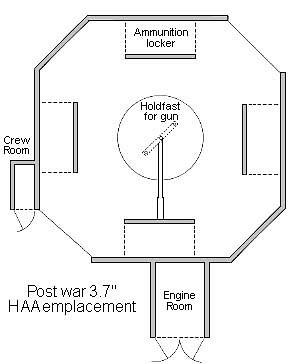 ATS girl Sheila Hopwood on duty at a 3.7 INCH gun battery.
ATS girl Sheila Hopwood on duty at a 3.7 INCH gun battery. East elevation of the WW2 semi-sunken
East elevation of the WW2 semi-sunken
command post plotting room.
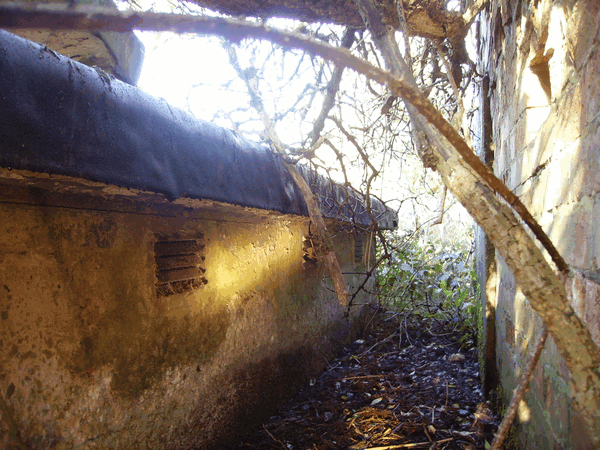 Basement entrance of the ground floor
Basement entrance of the ground floor
flooded command plotting room
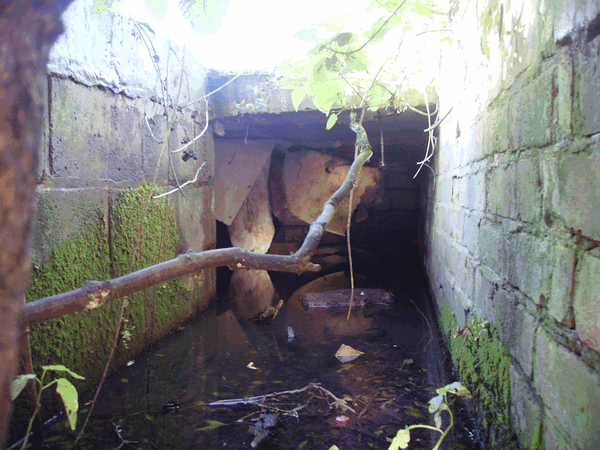 The WW2 east ammunition magazine, retained post WW2
The WW2 east ammunition magazine, retained post WW2
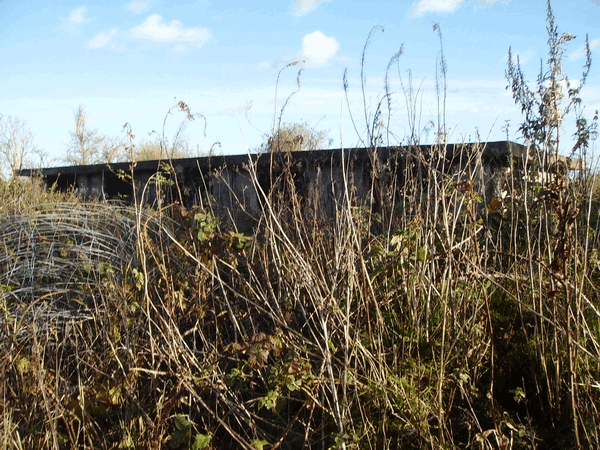 The WW2 electrical generator building, retained post WW2
The WW2 electrical generator building, retained post WW2
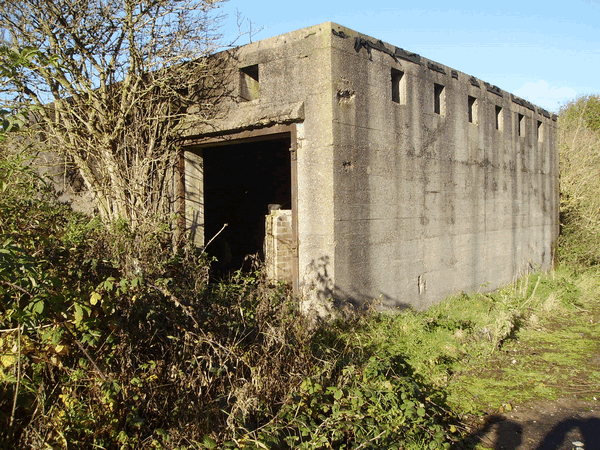 The WW2 west ammunition magazine, retained post WW2
The WW2 west ammunition magazine, retained post WW2
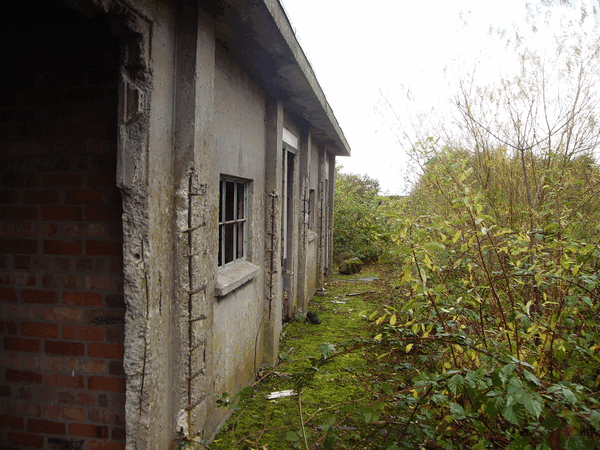 WW2 Gun emplacement on the
WW2 Gun emplacement on the
northern end of the site.
This emplacement has been modified
with the addition of an engine room.
The electrical steel conduit can still
be seen on the right-hand wall.
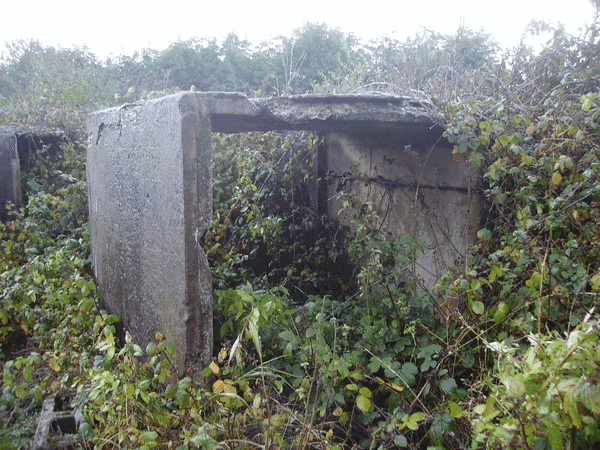 The WW2 east ammunition magazine, retained post WW2.
The WW2 east ammunition magazine, retained post WW2.
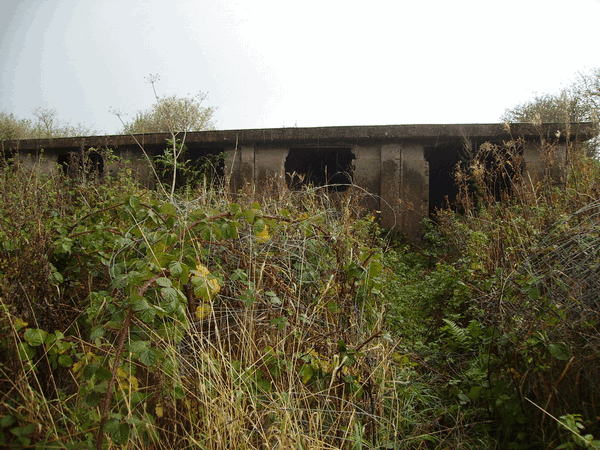 The post WW2 command post
The post WW2 command post
built during the site refit period.
The WW2 command post was disused when
the new command post became operational.
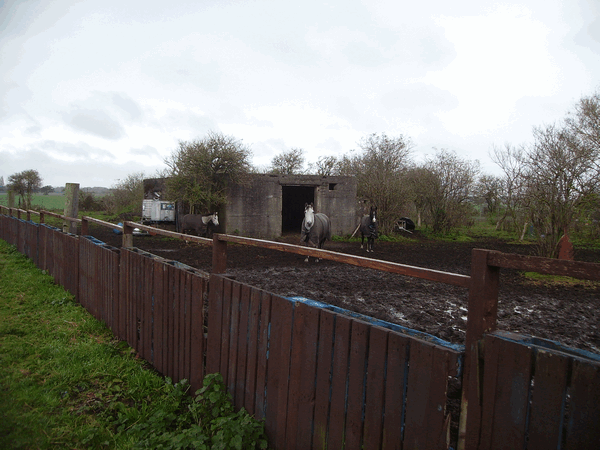 The post WW2 command post as you can see the
The post WW2 command post as you can see the
building is now being used as horse stables.
 The post WW2 command post.
The post WW2 command post.
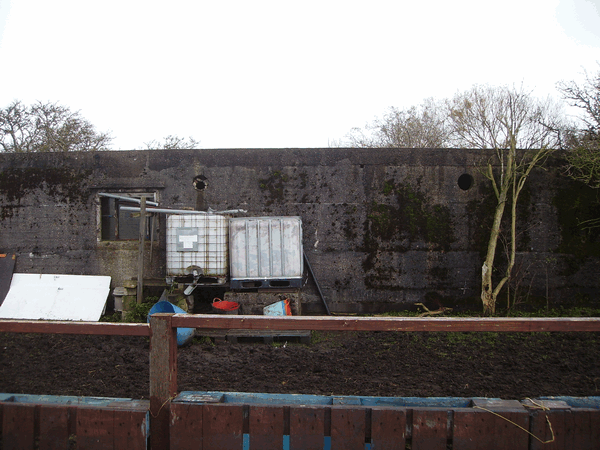 The remains of the post WW2 radar hard-standings.
The remains of the post WW2 radar hard-standings.
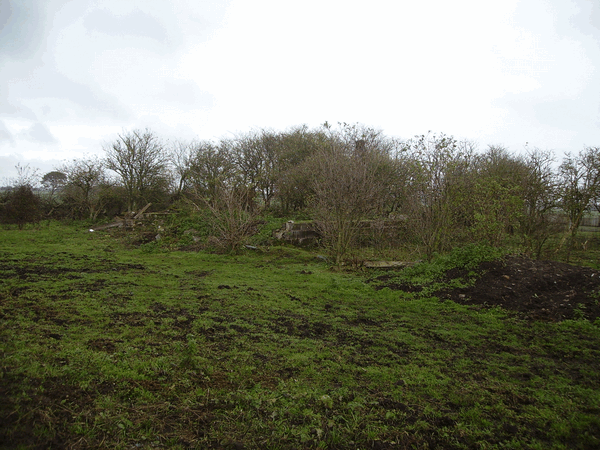 The remains of the camp barracks buildings foundations
The remains of the camp barracks buildings foundations
the WW2 water tower in the background.
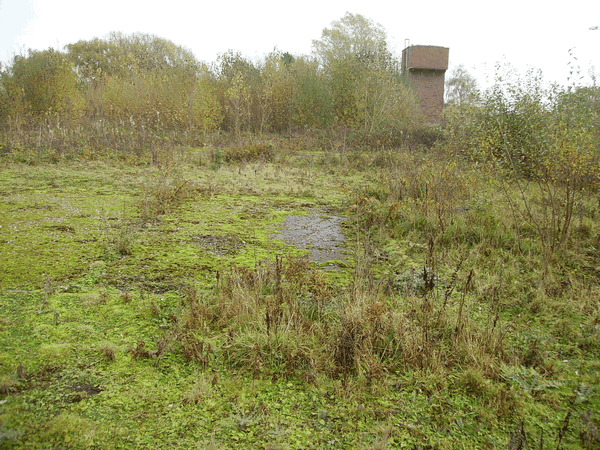 The foundations of the champ barracks the building top left have no
The foundations of the champ barracks the building top left have no
connection with the site, it is an abandoned chicken farm.
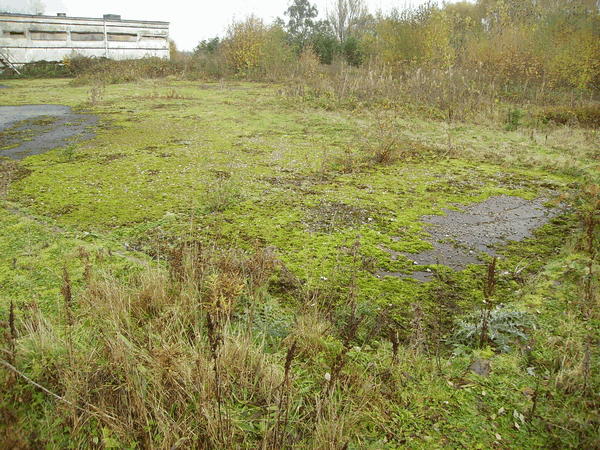 Steps down to the WW2 command plotting rooms
Steps down to the WW2 command plotting rooms
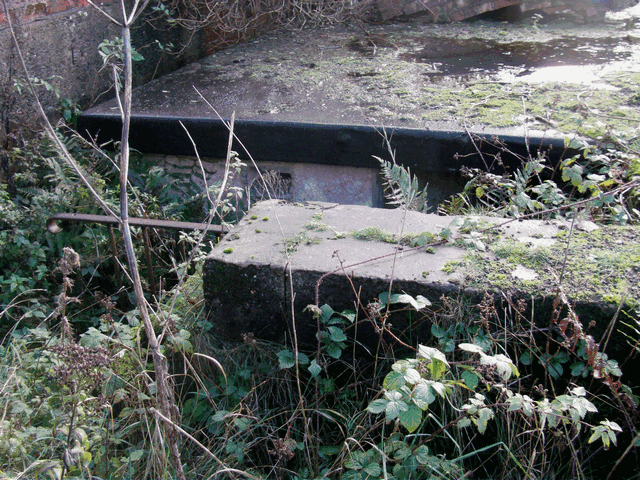
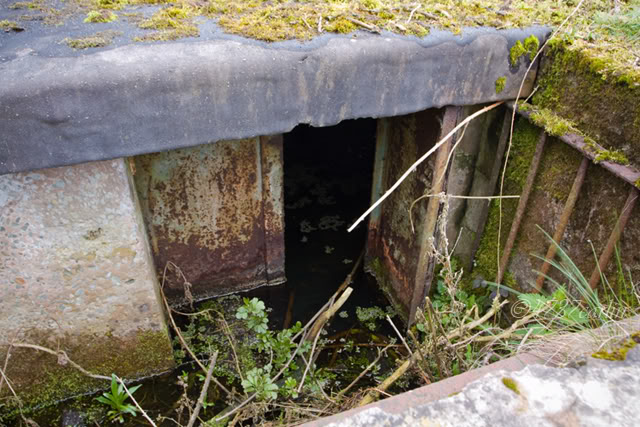
New post WW2 gun emplacement to
the north of the site heavily overgrown
 New post WW2 gun emplacement to the north of the site
New post WW2 gun emplacement to the north of the site
 New post WW2 gun emplacement to the north of the site
New post WW2 gun emplacement to the north of the site
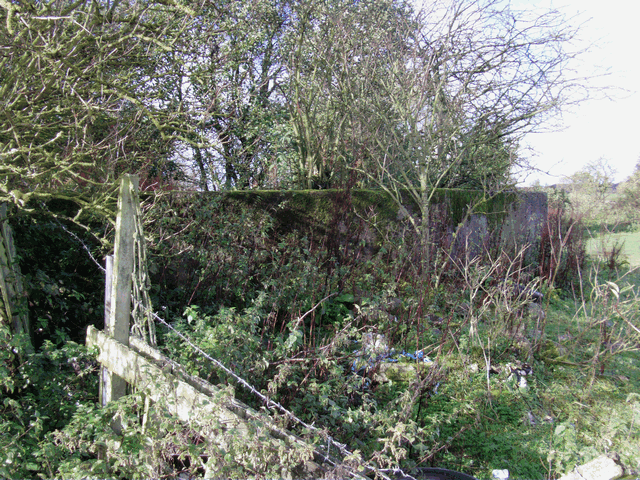 Gunning Placement Engine House
Gunning Placement Engine House
 WW2 Emplacement which has been modified with the addition of an engine room on the right of the photo. This is on the East side of the site.
WW2 Emplacement which has been modified with the addition of an engine room on the right of the photo. This is on the East side of the site.
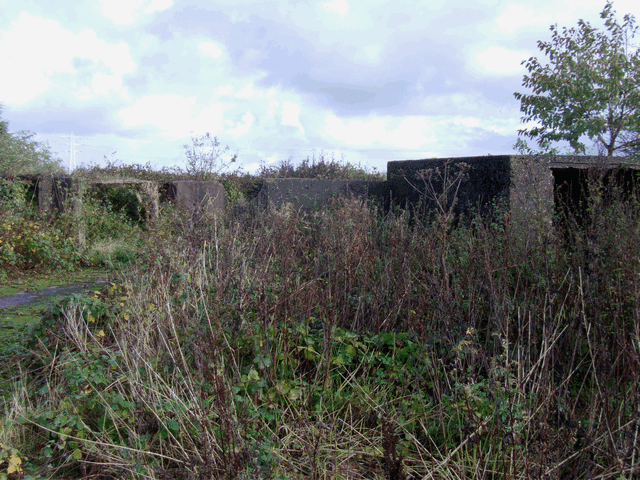

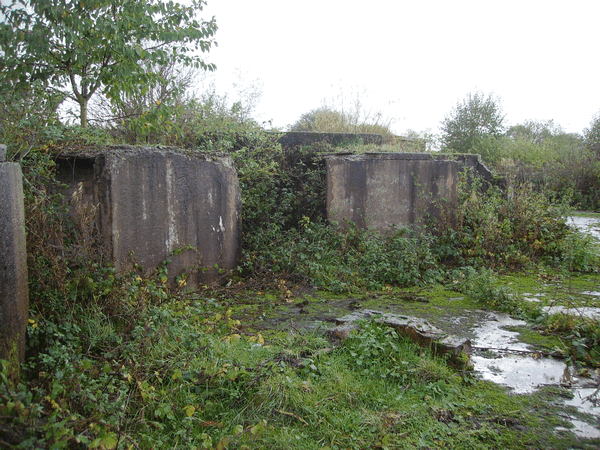
Post WW2 Gunning Placement on the Northern end of the site.
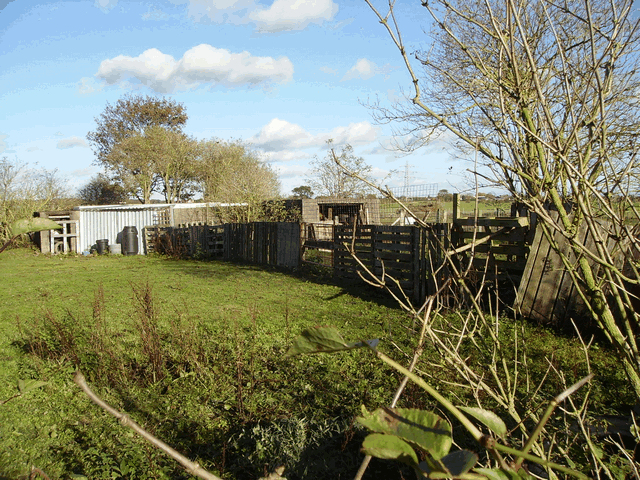 This emplacement is now heavily overgrown and was difficult to photo
This emplacement is now heavily overgrown and was difficult to photo
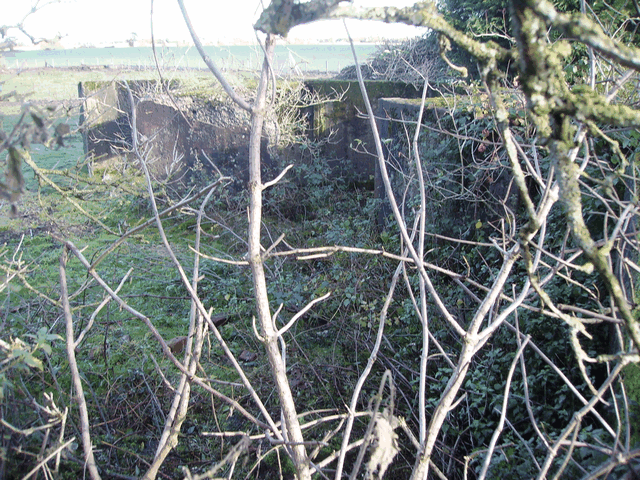 West Ammunition Magazine Taken From The Roof of The Command Post
West Ammunition Magazine Taken From The Roof of The Command Post
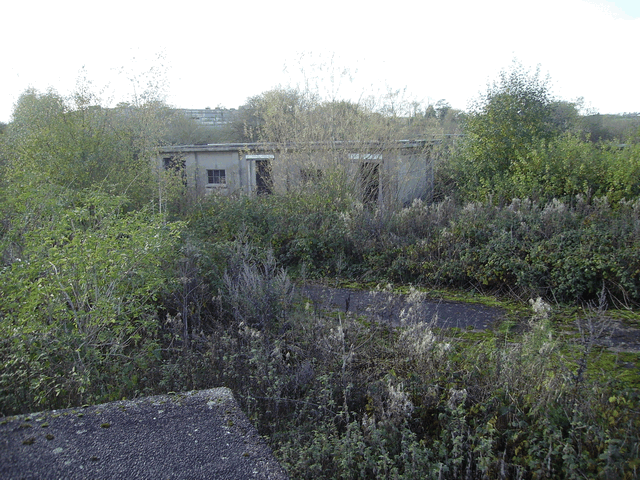 Inside 1 of the Rooms of The Ammunition Magazine
Inside 1 of the Rooms of The Ammunition Magazine
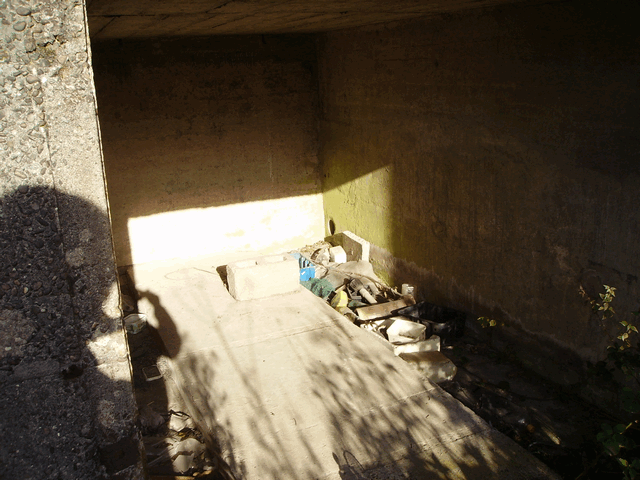 Post WW2 Emplacement at the Northern end of the site.
Post WW2 Emplacement at the Northern end of the site.
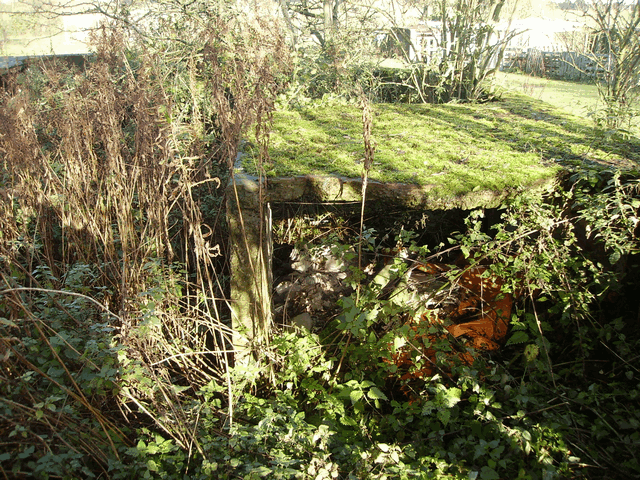 In the Foreground of the Photo and
In the Foreground of the Photo and
to the right is the enclosure of the
height and range finder instrument.
And in the background is the West ammunition
magazine and the generator building
 3.7 INCH gun emplacement on the east of the
3.7 INCH gun emplacement on the east of the
site photo taken on the roof of the engine room
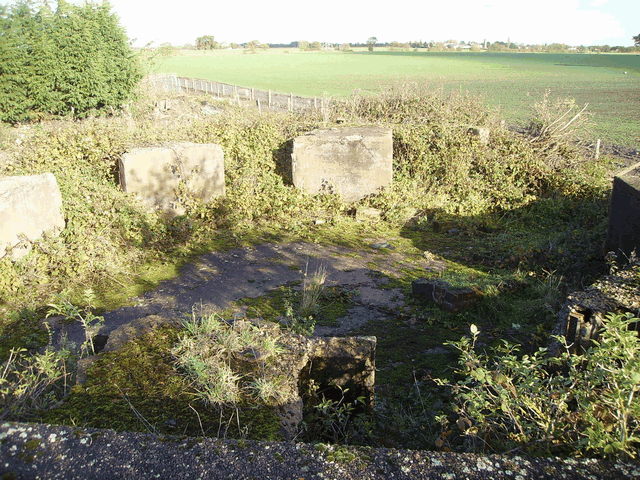 The same emplacement, the world war 2
The same emplacement, the world war 2
ammunition Lockers have been retained.
world war 2 emplacements had 6 lockers
and post world war emplacements had 4.
 Same emplacement taken at a different angle.
Same emplacement taken at a different angle.
 Same emplacement looking east.
Same emplacement looking east.
As you can see the WW2 emplacement has been
modified with the addition of a crew room in
the foreground to the left and an engine
room in the foreground right.
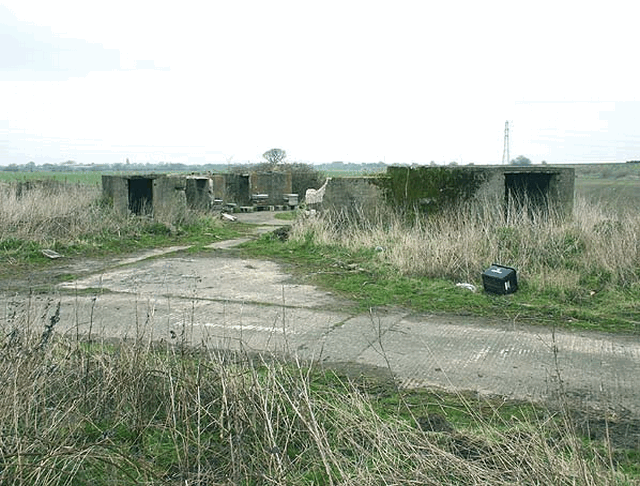 Same emplacement showing the holdfast metal
Same emplacement showing the holdfast metal
studs and trunking between the engine room and the gun.
The engine room was installed with an electric motor driving a hydraulic
pump to train the gun and the automatic loading mechanisms of the gun.
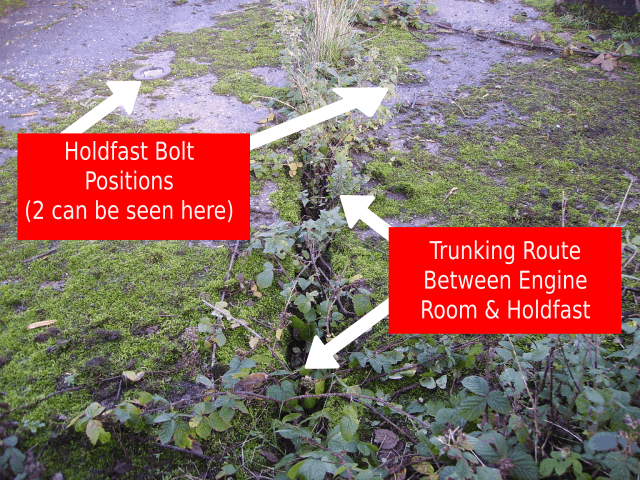 The roof of the ww2 semi-sunken plotting room
The roof of the ww2 semi-sunken plotting room
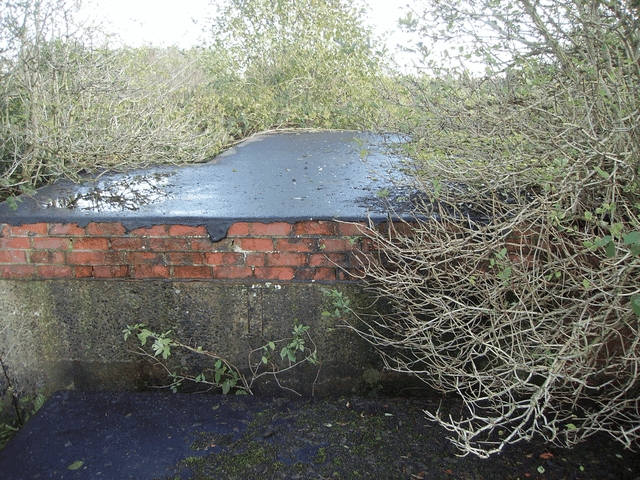 The WW2 command post in the foreground to the right was the
The WW2 command post in the foreground to the right was the
predictor and the square open area behind was for the height finder.
In the background can be seen the west ammunition
magazine and the electrical generator building.
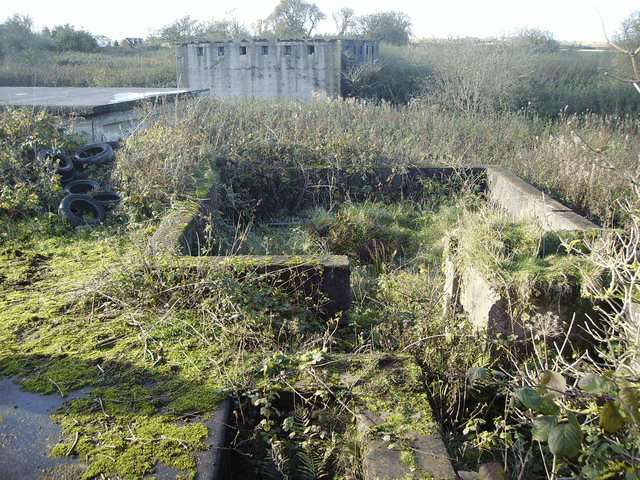 These are the steps down to the WW2 semi-sunken plotting room.
These are the steps down to the WW2 semi-sunken plotting room.
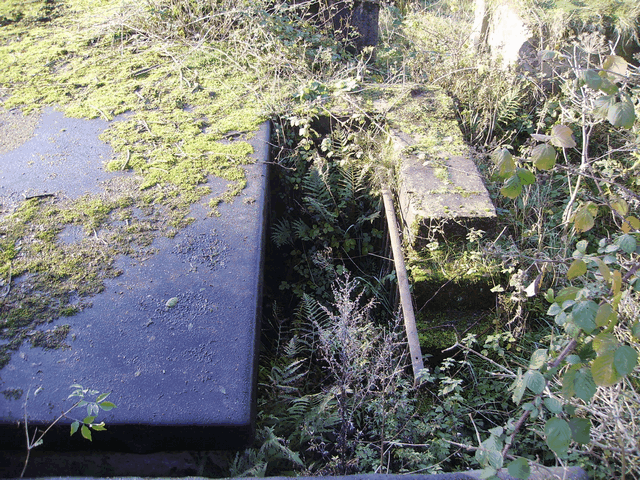 Ground level room adjacent to the flooded plotting room
Ground level room adjacent to the flooded plotting room
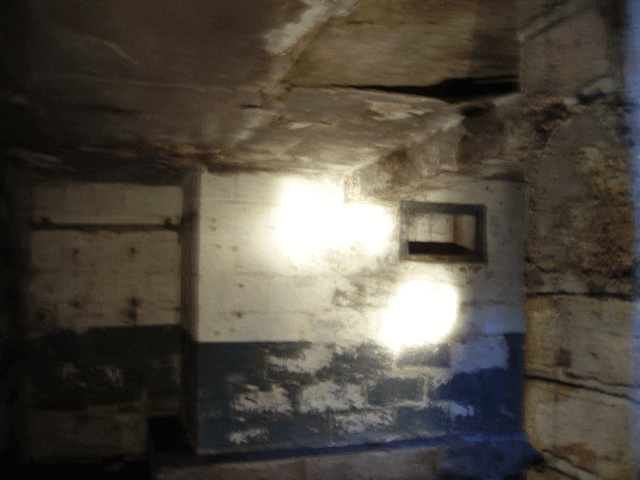
Crank (Near Billinge) Anti Aircraft Gun Battery Site West Lancashire (MY10)
(Typical Gun Battery)
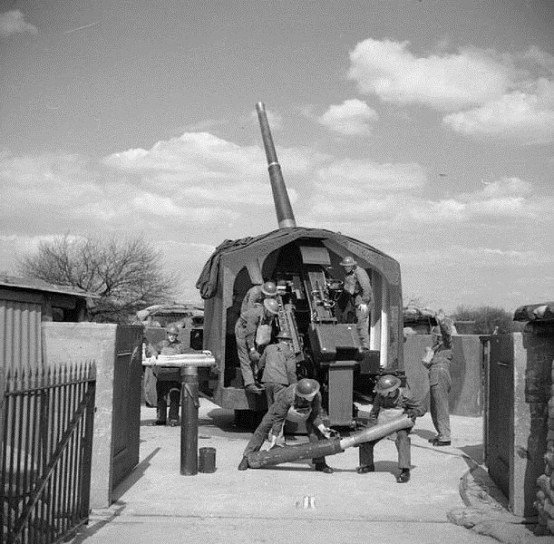
Plan View of Crank Gun Battery Today 2013
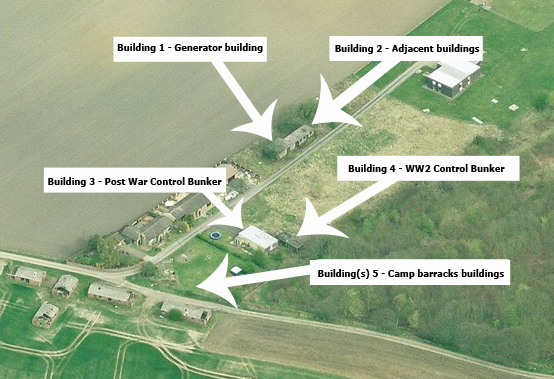
Building 1 - Generator building
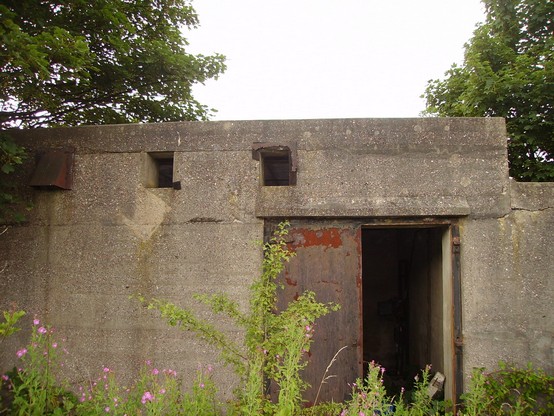
Building 2 - Adjacent buildings (Building 1 - Generator building far left)
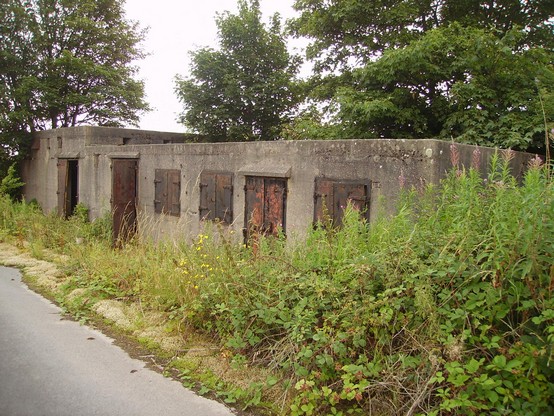
Building 2 - Adjacent buildings (Building 1 - Generator building on left)

Inside Building 1 - Generator building (electrical switchgear)
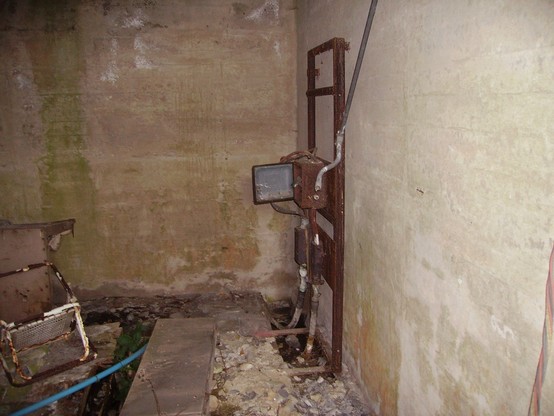

Inside Building 1 - Note the exhaust outlet grills
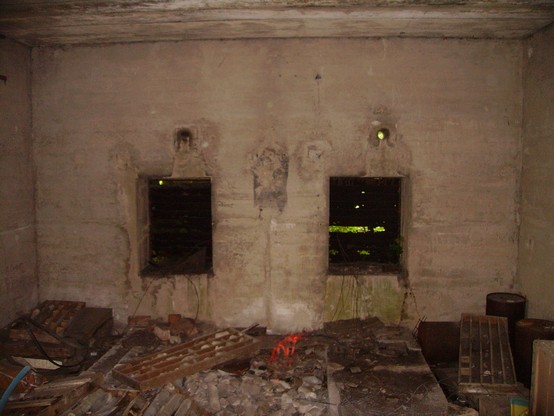
Inside Building 2 - Adjacent building to Generator building
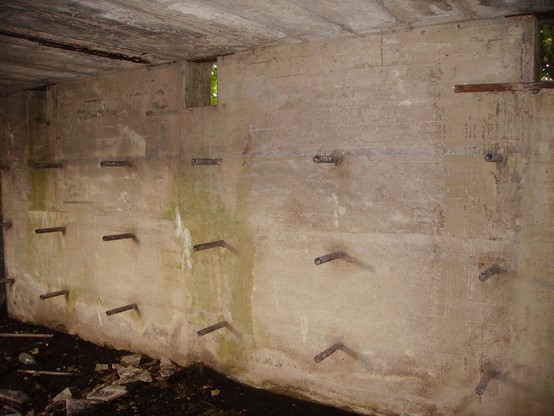
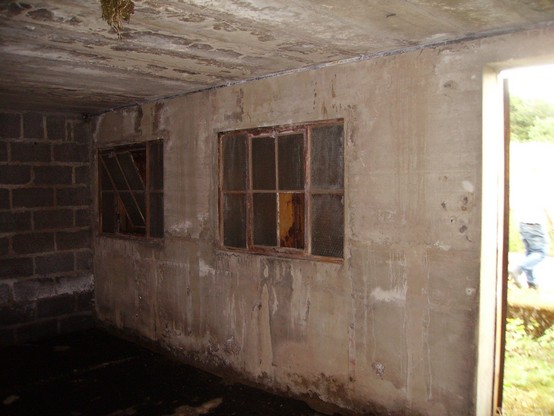
North-siding perimeter fence at side of generator building 1
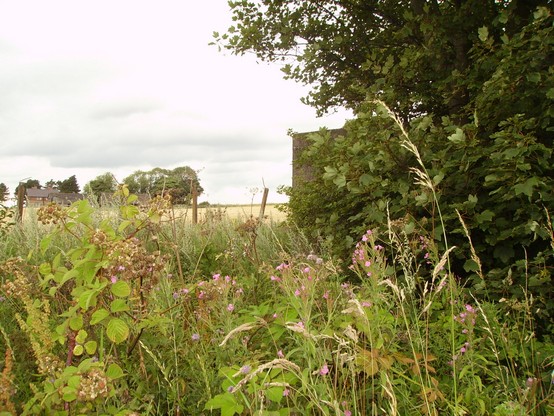
Building 3 - Post War Control Bunker (side on view)
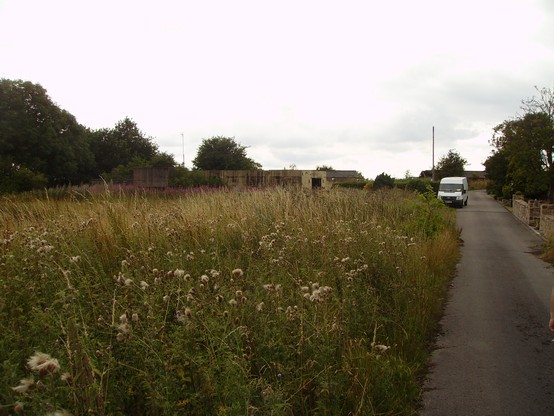
Building 3 - Post War Control Bunker (closer side on view)
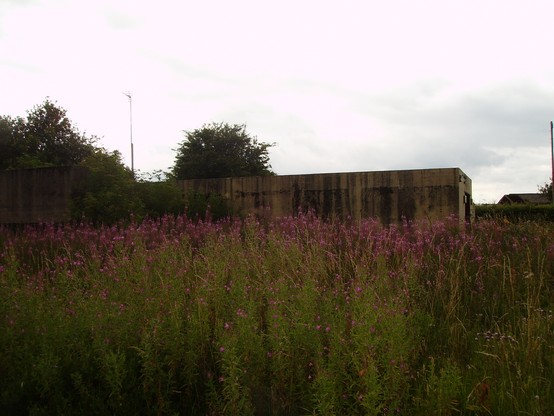
Building 4 - WW2 (Old) Control Bunker
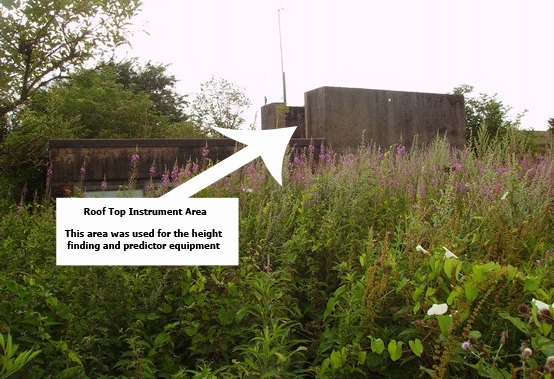
South-siding perimeter fence showing perimeter gate
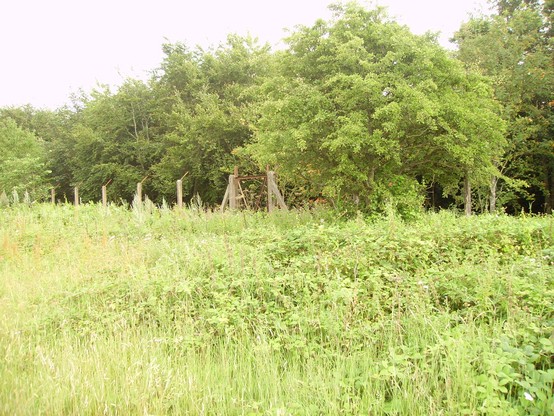
Building 3 - Post War Control Bunker (closer front view)
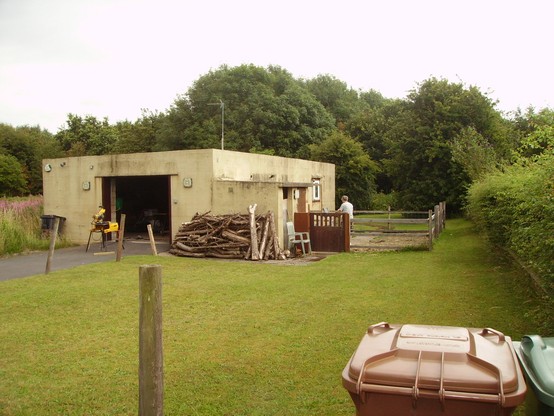
Building(s) 5 - Camp barracks buildings
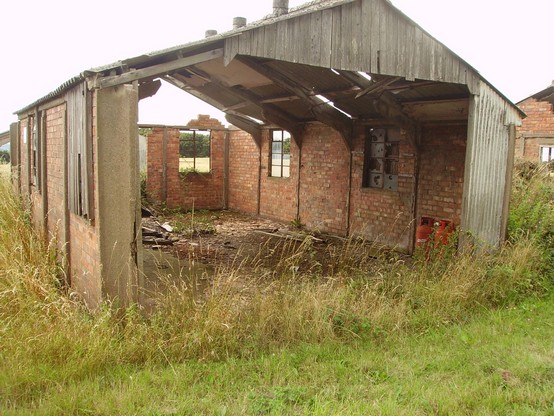
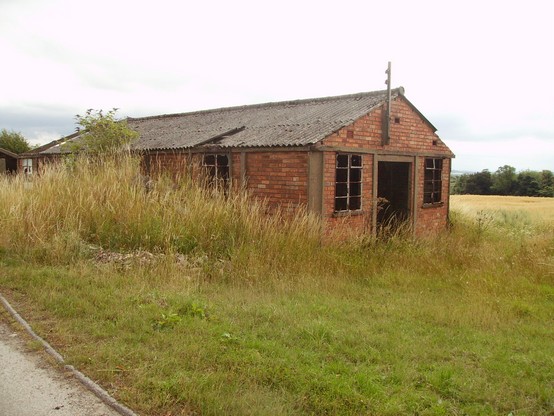
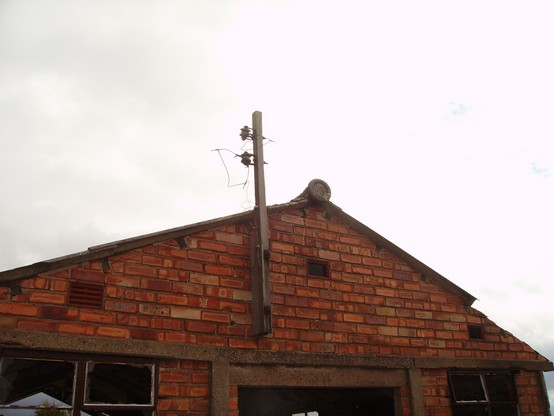
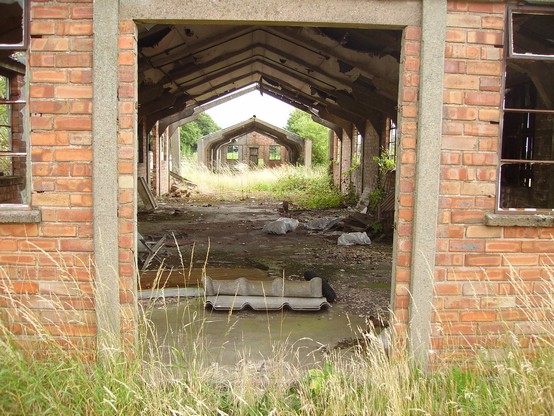
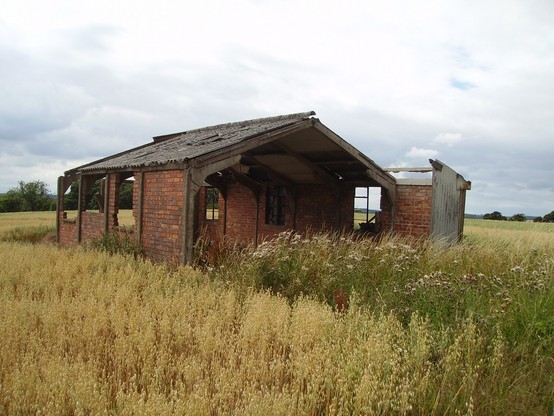
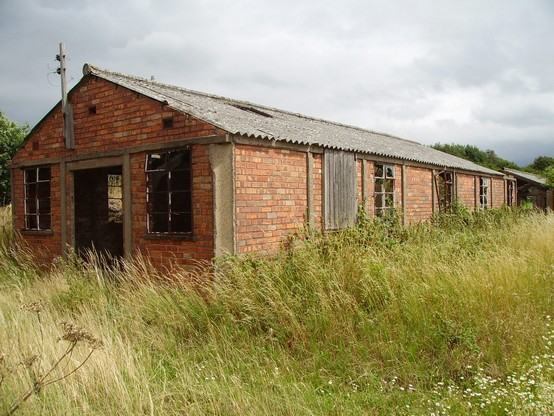
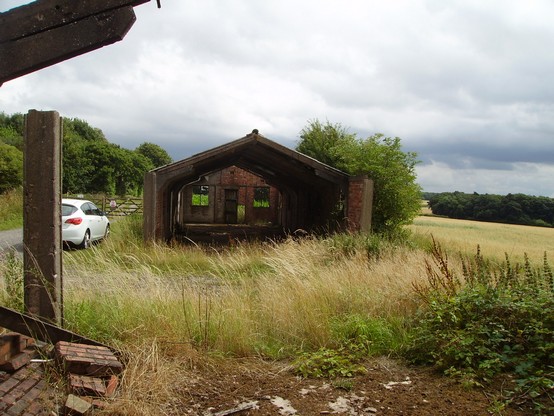
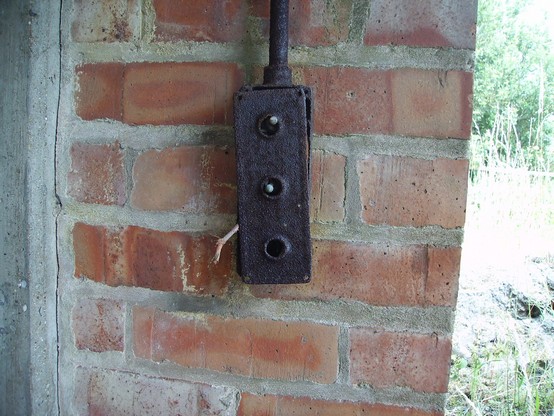

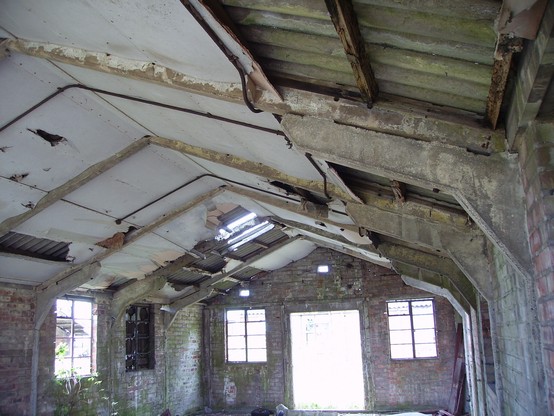
|







